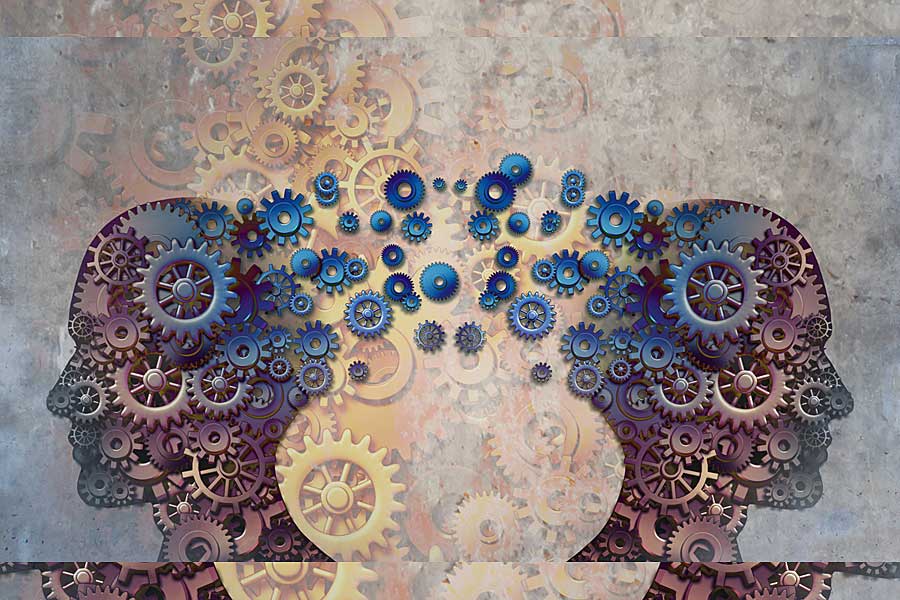Trusted for 25+ Years
Types of Therapy

Dr. Lisa Lawless, CEO of Holistic Wisdom
Clinical Psychotherapist: Relationship & Sexual Health Expert

When people speak of therapy, they typically refer to psychoanalysis; however, there are many modalities of therapy that are mainstream and accepted by hospitals and insurance companies as helping deal with emotional and mental issues. There are also many alternative therapies and we will review both below.
Some consider using therapy as an indication of weakness; however, true courage is not avoiding pain. It is facing it, which is what treatment allows people to do; face the things in their lives that are most painful and make things better.
If you are interested in learning about sex therapy, please see our Sex Therapy & Counseling Guide.
Alternative Medicine & Holistic Healing
There are many types of ways to treat physical, mental, and emotional issues using alternative medicine. CAM is an abbreviation for both complementary and alternative medicine and is also known as integrative health. It comes down to using both alternative medicine with traditional western medicine.
As science continues to show many alternative medicine modalities as evidence-based, many are now considered mainstream rather than alternative treatments. Acupuncture is the perfect example of that.
Acupuncture
Acupuncture therapy intends to promote health and alleviate pain and suffering. The method by which this is accomplished, though it may seem strange and mysterious to many, has been time tested over thousands of years and continues to be validated today.
The perspective from which an acupuncturist views health and sickness hinges on concepts of "vital energy," "energetic balance," and "energetic imbalance." Just as the Western medical doctor monitors the blood flowing through blood vessels and the messages traveling via the nervous system, the acupuncturist assesses the flow and distribution of this "vital energy" within its pathways, known as "meridians and channels." The acupuncturist can influence health and sickness by stimulating certain areas along these "meridians."
Traditionally these areas or "acupoints" were stimulated by fine, slender needles. Today, many additional stimulation forms are incorporated, including herbs, electricity, magnets, and lasers. Still, the aim remains the same - adjust the "vital energy" so the proper amount reaches the appropriate place at the proper time. This helps your body heal itself.
Learn more through our Acupuncture Guide
Ayurveda
Ayurveda is a Sanskrit word derived from two roots: ayur, which means life, and Veda, knowledge. Knowledge arranged systematically with logic becomes science. During the due course of time, Ayurveda became the science of life. It has its root in ancient Vedic literature and encompasses our entire life, the body, mind, and spirit. Ayurvedic literature states slow and steady is the best route to successful change. Most people find that diet is the best place to begin an Ayurvedic lifestyle.
Chinese Medicine
Chinese medicine is a complete medical system that has diagnosed, treated, and prevented illness for over twenty-three centuries. While it can remedy ailments and alter states of mind, Chinese medicine can also enhance recuperative power, immunity, and the capacity for pleasure, work, and creativity.
Within Chinese Cosmology, all of creation is born from the marriage of two polar principles, Yin and Yang: Earth and Heaven, winter and summer, night and day, cold and hot, wet and dry, inner and outer, body and mind. Harmony of this union means health, good weather, and good fortune, while disharmony leads to disease, disaster, and bad luck. The strategy of Chinese medicine is to restore harmony.
Each human is seen as a world in miniature, a garden where doctors and patients together strive to cultivate health. Every person has a unique terrain to be mapped, a resilient yet sensitive ecology to be maintained. Like a gardener uses irrigation and compost to grow robust plants, the doctor uses acupuncture, herbs, and food to recover and sustain health.
Holotropic Breathwork
Holotropic Breathwork is a kind of breathwork that uses a prescribed set and setting. Certified facilitators provide information about non-ordinary states of consciousness before participation. The breathing format includes evocative music, a reciprocating partnership in sitting and breathing sessions, art, focused energy release work, and group sharing for integration. The name holotropic is derived from Greek roots meaning moving toward wholeness.
Aromatherapy
Aromatherapy: The use of volatile plant oils, including essential oils, for psychological and physical well-being.
Learn more through our Aromatherapy Guide
Chiropractic
Chiropractic is a branch of the healing arts which is concerned with human health and disease processes. Doctors of Chiropractic are physicians who consider man as an integrated being and give special attention to the physiological and biochemical aspects, including structural, spinal, musculoskeletal, neurological, vascular, nutritional, emotional, and environmental relationships.
Massage Therapy
Massage Therapy is a profession in which the practitioner applies manual techniques and may apply adjunctive therapies to affect the client's health and well-being positively.
See Our Types of Massage & Sensual Massage Techniques Guide
Herbal Medicine
Herbalists use the leaves, flowers, stems, berries, and plants' roots to prevent, relieve, and treat illness. From a "scientific" perspective, many herbal treatments are considered experimental. The reality is, however, that herbal medicine has a long and respected history. Many familiar medications of the twentieth century were developed from ancient healing traditions that treated health problems with specific plants.
Today, science has isolated the medicinal properties of many botanicals, and their healing components have been extracted and analyzed. Many plant components are now synthesized in large laboratories for use in pharmaceutical preparations. For example, vincristine (an antitumor drug), digitalis (a heart regulator), and ephedrine (a bronchodilator used to decrease respiratory congestion) were all originally discovered through research on plants.
See Our Sex & Herbs Guide
Homeopathy
Homeopathic medicine is a natural pharmaceutical science that uses various plants, minerals, or animals in a minimal dose to stimulate the sick person's natural defenses. The medicines are individually chosen for their ability to cause an overdose of the similar symptoms the person is experiencing. "Homoios" in Greek means similar, and "pathos" means disease or suffering. Since one's symptoms are efforts of the organism to reestablish homeostasis or balance, it is logical to seek a substance that would, in overdose, cause similar symptoms the person is experiencing. The medicines, thus, go with, rather than against, the person's natural defenses.
Naturopathic Medicine
Natural medicine, nature cure, naturopathy, are these all the same thing, and whether or not they are, what do they have to offer for you in this era of 'scientific' medicine?
These are treatment systems that also offer a basic philosophy for living, which, if followed, is claimed to prevent ill health, which afflicts modern humans.
Quite merely, naturopathy is a system concerned with the whole person, rather than just the problems afflicting his/her various organs and systems. Naturopathy recognizes and uses the fact that the body is a self-healing organism, working with the knowledge that if the right environment and opportunity for self-healing can be created, repair, recovery, and good health will result, spontaneously and ill health will be prevented.
Osteopathy
Osteopathy is a health care system that recognizes that the self-healing, self-regulating ability of the body is dependent upon several factors, including favorable environmental conditions (internal and external), adequate nutrition, and normal structural integrity. It utilizes generally accepted methods of diagnosis, as well as certain specialized ones developed to facilitate accurate structural assessment. It emphasizes the importance of body mechanics and uses manipulative techniques to detect and correct faulty structure and function.
Types Of Traditional Therapy
We have provided a brief description of some of the most common types of therapy. Take a look to see if something calls to you, and if so, you can research what therapist in your area offers that type of therapy. If you want your insurance company to pay for some or all of the sessions, you will need to check with them to see if they cover the type of therapy and if the provider you wish to see is authorized to provide you with their services. Some insurance companies require you to see a therapist that is within their network while others do not.
-
Adlerian
A theory of individual psychology developed by Alfred Adler proposed that personality has a limited number of core concepts. An Individual Theory of Personality.
-
Animal Assisted
A psychotherapeutic technique that utilizes animals with a treatment tool to assist those with psychological problems.
-
Art Therapy
In the most inclusive sense, painting as a therapy has a curative effect on mental, emotional, or behavioral disorders.
-
Behaviorism
That type of psychotherapy seeks to change abnormal or maladaptive behavior patterns by using extinction and inhibitory processes and/or positive and negative reinforcement in classical and operant conditioning situations.
-
Brief Solution Focused Therapy
A general term used to cover any psychotherapy which is specifically designed to be relatively short in duration.
-
Client-Centered Psychotherapy
A Humanistic form of psychotherapy developed by Carl Rogers. The therapist is non-directive and reflective and does not interpret or advise except to encourage or clarify points.
-
Cognitive Behavioral Therapy
Cognitive behavioral therapy is primarily used to treat depression and anxiety disorders. It helps people learn how to identify and change negative thought patterns that have challenging influences on one's behavior and emotions.
-
Contemporary Psychoanalysis
The various contemporary schools are all the children and grandchildren of Freud.
-
Dance Therapy
The use of the physical and esthetic aspects of dance as a therapeutic technique.
-
EMDR: Eye Movement Desensitization & Reprocessing
It was discovered by Francine Shapiro, Ph.D., in 1987. We're not sure why it works, but it does. By merely providing side-to-side sensations to a person while discussing traumatic events in a specific therapeutic fashion can work wonders in allowing the person to heal himself or herself.
-
Existential Psychotherapy
A theory of individual psychology concentrating on freedom and responsibility. Developed by Victor Frankl it is a system highlighting the role of responsibility, free choice.
-
Feminist Psychotherapy
A theory of individual psychology concentrating on women.
-
Freudian Psychotherapy
In the most inclusive sense, the use of absolutely any technique or procedure that has a palliative or curative effects upon any mental, emotional, or behavioral disorder. In the case of Sigmund Freud, the founder of Psychotherapy, a Psychoanalytic Theory of Personality.
-
Gestalt Therapy
A form of psychotherapy associated with the work of Frederick Perls. It s based loosely on the Gestalt concepts of unity and wholeness and is a form of psychotherapy. It emphasizes personal responsibility, the present moment, environmental and social contexts of a person's life, and self-regulating productively.
-
Group Therapy
A very general term used to cover any psychotherapeutic process in which groups of individuals meet together with a therapist/leader.
-
Humanistic Psychotherapy
The creation of Abraham Maslow concentrates on the higher human motives, self-development, knowledge, understanding, and esthetics.
-
Jungian Psychotherapy
The analytical psychology of Carl Jung. Dream interpretation, symbols, and meaning.
-
Music Therapy
In the most inclusive sense, the use of absolutely any technique, in this case, music, or procedure that has a palliative or curative effects upon any mental, emotional, or behavioral disorder.
-
Narrative Therapy
This refers to a viewpoint or a stance within psychology interested in the storied nature of human conduct.
-
Object Relations Psychotherapy
Object relations, the emotional bonds between oneself and another.
-
Personal Construct Therapy
Personal constructs the central concept in George Kelly's theory of personality. It is a covered term for how a person attempts to perceive, understand, predict, and control the world—a Cognitive Theory of Personality.
-
Play Therapy
The use of play situations in a therapeutic setting.
-
Primal Therapy / Depth Psychology
A form of therapy based on the theory of Arthur Janov. The procedure consists basically of an intense therapeutic interaction between client and therapist focused on a single goal.
-
Psychodrama
A psychotherapeutic technique developed by J. L. Moreno in which the individual acts out specific roles or incidents in the presence of a therapist and other persons who are part of a therapy group often.
-
Psychosocial Therapy / Erikson
In the most inclusive sense, the use of absolutely any technique or procedure that has a palliative or curative effects upon any mental, emotional, or behavioral disorder.
-
Rational Emotive Behavior
It is a cognitive-behavioral therapy whose comprehensive approach helps people change dysfunctional emotions and behaviors by showing them how to become aware of and modify the beliefs and attitudes that creates these unwanted states.
-
Social Learning: Bandura
In the most inclusive sense, this theory states that we are who we are by the process of Observational Learning.
-
Therapeutic Touch Psychotherapy: TT or Therapeutic Touch
Invented by Dolores Krieger, it is based on the assumption that a "human energy field" extends beyond the skin. The idea behind TT is that this human energy field is abundant and flows in balanced patterns in health but is depleted and/or unbalanced in illness or injury. Practitioners believe they can restore health by sensing and adjusting such fields.
-
Transpersonal Therapy
A branch of psychology is concerned with studying those states and processes in which people experience a more profound or broader sense of who they are, or a sense of greater connectedness with others, nature, or the spiritual dimension.
-
Trait Theory
A theory of individual psychology concentrating on a blend of humanistic and personalistic approaches to the study of human behavior, developed by Gordon Allport.
Here are some types of therapy specifically helpful for trauma and abuse:
- Cognitive Behavioral Therapy (CBT)
- Dialectical Behavior Therapy (DBT)
- Eye Movement Desensitization and Reprocessing (EMDR)
- Prolonged Exposure Therapy (PET)
- Trauma-Focused Cognitive Behavioral Therapy (TF-CBT)
- Somatic Experiencing (SE)
- Sensorimotor Psychotherapy
- Internal Family Systems Therapy (IFS)
- Attachment-based Therapy
- Bottom-Up Approaches, such as yoga, mindfulness, and meditation.
- Polyvagal theory-informed therapy (PVT)
- Emotion-focused therapy (EFT)
- Coherence therapy (CT)
Tips For People New To Therapy
As a clinical psychotherapist, here are some tips to help people feel more comfortable with the therapy process:
Therapy is not about a therapist fixing things for you; instead, their role is to give you the tools to heal and grow. Think of it like working as a team, but ultimately, you control how you proceed and what you do to improve your well-being.
Therapists are trained to refrain from judgment, and we seasoned ones have heard pretty much everything. So, don't be afraid to talk about things openly and honestly. Chances are, we have had many patients experiencing similar things.
There is no such thing as 'normal' regarding mental health. It's about what is healthy for you—focusing on what's beneficial for you and how we can work together to achieve that is the goal.
Remember, therapists are people too, and just like any professional, some are good, and some are not great. In addition, even if you find a good therapist, they or their techniques may not be the right fit for you. So, if you feel like you're not progressing with a therapist, don't feel guilty about finding a different one that suits your needs.
Being open and honest with your therapist is vital to making progress. It's natural to feel hesitant or embarrassed, but remember your therapist is there to help you. The more you are willing to share, the more your therapist can understand your needs and provide insights, resources, and tools for you to grow and heal.
Approach therapy with a positive and proactive attitude. It takes time and effort, but the rewards are worth it. Remember, therapy is an investment in yourself and your well-being; you deserve care that suits you.
Many therapists help clients to gain insights into their issues, and for those who can benefit from this, using cognitive-based therapies like CBT can be helpful. However, if you are highly self-aware and analytical but need help in healing and change, other forms of therapy may be more ideal for you, such as somatic therapy.
Remember that even noncognitive therapies like somatic therapy can be challenging. Thus, it is essential to approach therapy understanding that this process can take time, so have compassion for yourself. The coping mechanisms you have in place that have protected you from harm, even if they are unhealthy.
Coping mechanisms have allowed you to survive, and there will be a great deal of resistance to changing them when using different therapeutic tools to change how we respond in a healthier manner.
In some cases, it is not uncommon to see therapy cause more distress for people as these automatic coping responses have been ingrained so deeply. For example, if you spend a lot of time in a fight or flight response filled with high anxiety, it is likely because you learned this was needed to self-protect.
So doing a therapy exercise like taking deep breaths or doing yoga may cause you to become dysregulated or even have a panic attack when you first begin. This is because your fight or flight reactions have been reinforced many times, and it can feel unsafe to relax.
Or perhaps you are often in a state of dissociation and have spent a lot of time emotionally shut down. Again, it's because you have learned that that is the state of being that has offered the most safety. Using therapy techniques to come out of that state can cause a lot of unconscious emotional, mental, and even physical resistance.
This is why it is essential not to rush ourselves and appreciate the defense mechanisms we've adopted for how they have served us while working toward healthier coping methods.
You can ask your therapist for changes to the therapeutic approach at any point during therapy. If your therapist acts like they know what you need better than you do or can't take feedback, they may not be the right fit for you. Make sure to advocate for the care you want and need.


